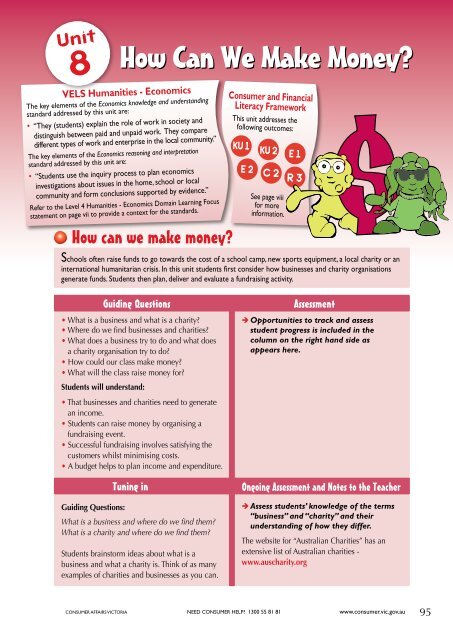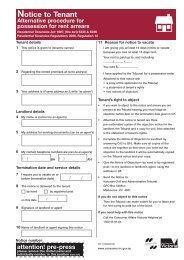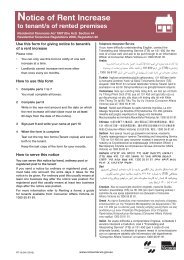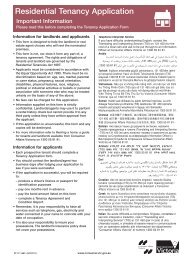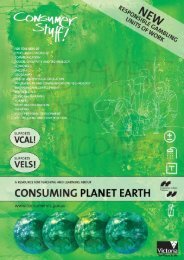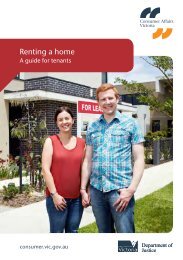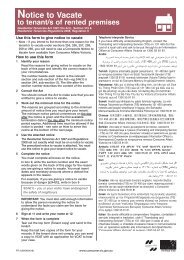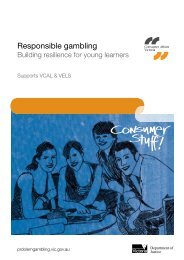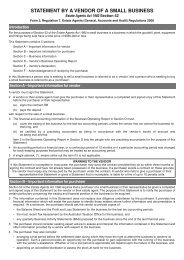Consumer Stuff for kids (PDF, 6.2 MB) - Consumer Affairs Victoria
Consumer Stuff for kids (PDF, 6.2 MB) - Consumer Affairs Victoria
Consumer Stuff for kids (PDF, 6.2 MB) - Consumer Affairs Victoria
Create successful ePaper yourself
Turn your PDF publications into a flip-book with our unique Google optimized e-Paper software.
Unit<br />
VELS Humanities - Economics<br />
The key elements of the Economics knowledge and understanding<br />
standard addressed by this unit are:<br />
• “They (students) explain the role of work in society and<br />
distinguish between paid and unpaid work. They compare<br />
different types of work and enterprise in the local community.”<br />
The key elements of the Economics reasoning and interpretation<br />
standard addressed by this unit are:<br />
• “Students use the inquiry process to plan economics<br />
investigations about issues in the home, school or local<br />
community and <strong>for</strong>m conclusions supported by evidence.”<br />
Refer to the Level 4 Humanities - Economics Domain Learning Focus<br />
statement on page vii to provide a context <strong>for</strong> the standards.<br />
Guiding Questions<br />
• What is a business and what is a charity?<br />
• Where do we find businesses and charities?<br />
• What does a business try to do and what does<br />
a charity organisation try to do?<br />
• How could our class make money?<br />
• What will the class raise money <strong>for</strong>?<br />
Students will understand:<br />
How Can We Make Money?<br />
8 How Can We Make Money?<br />
How can we make money?<br />
• That businesses and charities need to generate<br />
an income.<br />
• Students can raise money by organising a<br />
fundraising event.<br />
• Successful fundraising involves satisfying the<br />
customers whilst minimising costs.<br />
• A budget helps to plan income and expenditure.<br />
<strong>Consumer</strong> and Financial<br />
Literacy Framework<br />
This unit addresses the<br />
following outcomes:<br />
KU 1 KU 2<br />
See page viii<br />
<strong>for</strong> more<br />
in<strong>for</strong>mation.<br />
Schools often raise funds to go towards the cost of a school camp, new sports equipment, a local charity or an<br />
international humanitarian crisis. In this unit students first consider how businesses and charity organisations<br />
generate funds. Students then plan, deliver and evaluate a fundraising activity.<br />
CONSUMER AFFAIRS VICTORIA NEED CONSUMER HELP? 1300 55 81 81 www.consumer.vic.gov.au<br />
E 2<br />
C 2<br />
E 1<br />
R 3<br />
Assessment<br />
Opportunities to track and assess<br />
student progress is included in the<br />
column on the right hand side as<br />
appears here.<br />
Tuning in Ongoing Assessment and Notes to the Teacher<br />
Guiding Questions:<br />
What is a business and where do we find them?<br />
What is a charity and where do we find them?<br />
Students brainstorm ideas about what is a<br />
business and what a charity is. Think of as many<br />
examples of charities and businesses as you can.<br />
Assess students’ knowledge of the terms<br />
“business” and “charity” and their<br />
understanding of how they differ.<br />
The website <strong>for</strong> “Australian Charities” has an<br />
extensive list of Australian charities -<br />
www.auscharity.org<br />
95


